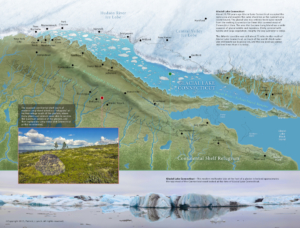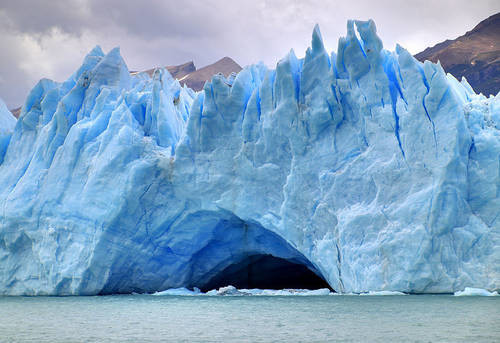Glacier Science at Home
Social distancing can seem daunting, but this activity is a fun distraction for the whole family and requires things you’ve likely got in your house right now!
In this article, we are exploring glacier science. Why? Because long ago, glaciers formed Long Island Sound and the coastlines we’ve got today!
Glaciers are massive bodies of ice and snow that move on their own and are strong enough to move the land as they travel. One of these glaciers moved in the space between Long Island and Connecticut and formed a lake as it melted. The barrier of land (terminal moraine) between that lake (formerly known as Lake Connecticut) and the Atlantic Ocean eventually gave way on the east end (also known as “The Race”) and the ocean flooded the lake. The glacial movement and additional salt water created our beloved Long Island Sound’s unique brackish habitats.
While reading about glacier behavior is enthralling to some, an experiment will better show the impact these giants have on the geography of an area and emphasize the role they played in the formation of Connecticut’s coastline.
For this activity, you will need:
A plastic cup
Gravel and soil
Blue food coloring (fun, but not necessary)
Flour (~2 cups)
Cooking spray / oil
Baking sheet
Freezer
Directions
- Place gravel and dirt in the plastic cup and add enough water to fill the bottom half of the cup. Add a few drops of blue food coloring and mix everything together.
- Put the cup in the freezer for one day to be sure your mini-glacier is completely frozen. (You might want to label it so that nobody thinks it is a tasty treat!)
- Before you take your mini-glacier out of the freezer, make a landscape to put it on. Spray a baking sheet with a little bit of cooking spray or brush with oil and then sprinkle the flour onto it until you have a thick layer of flour on the sheet. The flour represents the land.
- Take your glacier out of the freezer and out of the plastic cup. Place your glacier at one end of the baking sheet landscape.
- Push your glacier across the flour landscape and notice how it changes the shape of the land and what it leaves behind as the glacier melts.
What happened to your landscape?
Glaciers are always on the move. Real glaciers flow as the weight of new snow and ice on the upslope side pushes the whole glacier downward. It moves down because of the pull of gravity. Your mini-glacier is moving because you push it; it is not flowing like the ice in a real glacier. Video: How Do Glaciers Move
As your glacier moves, it pushes the layer of flour just as real glaciers push dirt and rocks as they move. Your glacier may have plowed flour along in front of it and when you take your glacier off of the landscape there is a mound of flour that was pushed by the glacier. When real glaciers leave a hill like this, it is called a terminal moraine.
Your mini-glacier may have left little ridges of flour on the sides of its path as it moved down the slope. When real glaciers leave piles of sand and gravel at the sides of their path, each is called a lateral moraine.
Did your glacier make streaks in the flour that it moved over? These are like striations, scratches that real glaciers make in the bedrock that they scrape.
As your glacier melts, it may leave behind pieces of gravel or soil that was trapped within the ice. Real glaciers will pick up rocks and boulders from the land they are moving over which may get stuck in the ice. As it melts, it can cause erratics, or rocks and boulders that are left behind.
Follow- Up Activity
Check out Long Island Sound for yourself! Taking a walk down our craggy coastline is a low risk activity, and just the breath of fresh air you (and the family) might need.
Let us know how your glacier models turn out!
Adapted from: http://eo.ucar.edu/kids/wwe/ice4.htm




